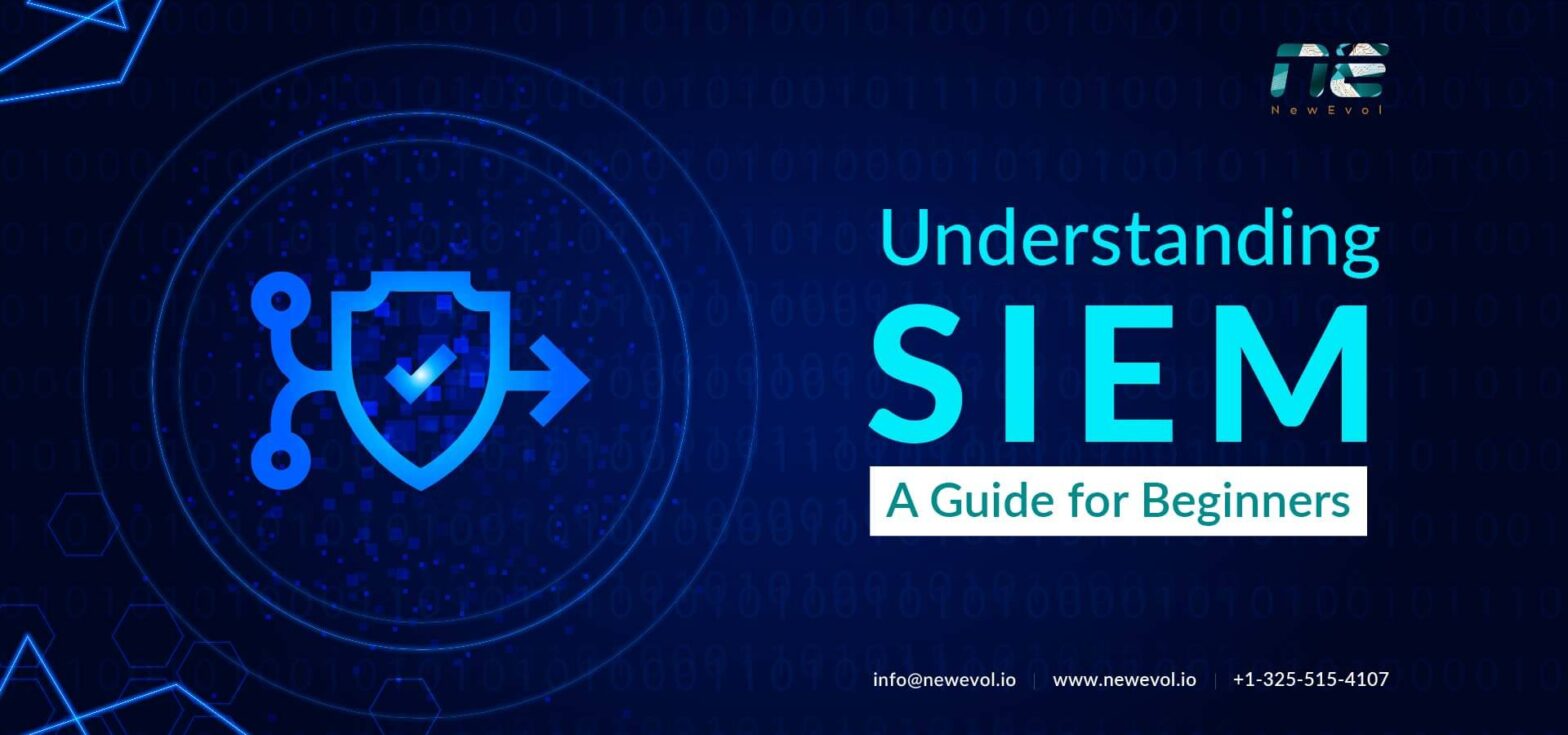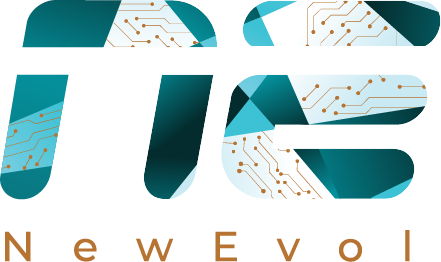What is SIEM? A Simple Guide to Cybersecurity and Protecting Your Business

Cyber threats are on the rise, making it crucial for organizations to bolster their security measures. One powerful tool in this battle is Security Information and Event Management (SIEM), which helps businesses monitor, detect, and respond to potential security incidents in real time. But what exactly does SIEM do, and how can it benefit your organization?
This SIEM guide beginners will break down the essentials of SIEM for beginners, covering its key functions, how it operates, and its importance in maintaining a strong security posture. Whether you’re a business leader, an IT professional, or someone eager to learn more about cybersecurity, understanding SIEM is a vital step toward safeguarding your sensitive data. Let’s explore SIEM together!
What is SIEM?
Security Information and Event Management (SIEM) is a comprehensive cybersecurity solution that aggregates, analyzes, and manages security data from across an organization’s IT infrastructure. By collecting log and event data from various sources—such as servers, network devices, databases, and applications—SIEM provides a centralized view of an organization’s security posture.
Key Features of SIEM
Understanding the key features of SIEM is essential for grasping how this powerful tool enhances an organization’s cybersecurity posture.
1. Data Collection and Aggregation
SIEM systems collect and aggregate log data[1] from various sources across an organization’s network, including servers, firewalls, routers, and applications. This centralized data collection allows for a comprehensive view of security events, making it easier to identify potential threats.
2. Real-Time Monitoring
One of the core functionalities of SIEM is real-time monitoring. SIEM tools continuously analyze incoming data to detect suspicious activities and potential security incidents as they occur. This proactive approach enables organizations to respond swiftly to emerging threats.
3. Threat Detection and Correlation
SIEM solutions use advanced algorithms to correlate data from different sources and identify patterns that may indicate a security breach. By analyzing logs and events, SIEM can detect anomalies and alert security teams to potential threats, reducing response times and minimizing damage.
4. Incident Response
When a potential threat is detected, SIEM systems can initiate automated incident response protocols or alert security personnel for further investigation. This feature enhances the organization’s ability to respond effectively to incidents, reducing the risk of escalation.
5. Reporting and Compliance
SIEM tools generate detailed reports on security incidents, system performance, and compliance status. These reports are essential for regulatory compliance, helping organizations demonstrate adherence to standards like GDPR, HIPAA, and PCI DSS. They also provide insights into security trends and potential vulnerabilities.
6. Dashboard Visualization
Most SIEM solutions include customizable dashboards that provide visual representations of security data and metrics. This feature allows security teams to monitor their environment easily, track key performance indicators, and gain insights into security posture at a glance.
7. User and Entity Behavior Analytics (UEBA)
Some SIEM solutions incorporate UEBA[2] to analyze user and entity behaviors, helping to identify insider threats or compromised accounts. By establishing baselines for normal behavior, SIEM can detect deviations that may signify malicious activity.
8. Integration with Other Security Tools
SIEM systems often integrate with other security technologies, such as firewalls, intrusion detection systems (IDS), and threat intelligence platforms. This integration enhances overall security by enabling a more comprehensive approach to threat detection and response.
9. Threat Intelligence
Many SIEM solutions come with built-in threat intelligence feeds that provide real-time updates on emerging threats and vulnerabilities. By incorporating this data, SIEM can improve its threat detection capabilities and help organizations stay ahead of potential attacks.
10. Scalability and Flexibility
Modern SIEM solutions are designed to scale with an organization’s needs. Whether a company is expanding its operations or adapting to new regulatory requirements, a flexible SIEM can accommodate increasing data volumes and evolving security landscapes.
How SIEM Works
SIEM systems operate through a series of processes designed to collect, analyze, and respond to security data from across an organization’s network. Here’s a breakdown of how SIEM works:
Data Collection
SIEM begins with the collection of log and event data from various sources, including servers, network devices, applications, and security tools. This data can come from on-premises, cloud, or hybrid environments. The goal is to gather as much relevant information as possible to create a comprehensive view of the security landscape.
Data Normalization
Once the data is collected, SIEM systems normalize it into a consistent format. This step is crucial because log data can vary significantly between different devices and applications. By standardizing the data, SIEM makes it easier to analyze and compare events across various sources.
Data Correlation
After normalization, the SIEM system correlates data from different sources to identify patterns or anomalies that may indicate a security incident. This involves analyzing relationships between events, such as multiple failed login attempts followed by a successful login from the same IP address. Correlation rules and algorithms help prioritize which events should be investigated further.
Alerting and Incident Response
When the SIEM detects potential threats through correlation and analysis, it generates alerts to notify security personnel. Depending on the configuration, SIEM can also initiate automated responses, such as blocking an IP address or isolating a compromised device. This rapid response capability helps minimize the impact of security incidents.
Visualization and Reporting
SIEM solutions typically include dashboards that provide visual representations of security data, making it easier for security teams to monitor their environment. Reports can be generated to summarize security incidents, compliance status, and overall system performance. These insights are valuable for decision-making and strategic planning.
Retention and Forensics
SIEM systems retain historical log data for forensic analysis and compliance purposes. This retention capability allows organizations to investigate past incidents, identify trends, and improve their security measures over time. In the event of a breach, having access to historical data can be crucial for understanding how the incident occurred.
Continuous Improvement
As organizations evolve, so do their security needs. SIEM systems support continuous improvement by allowing security teams to adjust correlation rules, alert thresholds, and response strategies based on new threats and changes in the IT environment. This adaptability ensures that the SIEM remains effective in detecting and responding to emerging threats.
Types of SIEM Solutions
When considering SIEM solutions, organizations can choose from several deployment models, each offering distinct advantages and considerations. Here are the main types of SIEM solutions:
1. On-Premises SIEM
On-premises SIEM solutions are installed and managed within an organization’s own data center. This model provides complete control over security data and compliance processes, which can be crucial for organizations with strict data privacy regulations. However, on-premises SIEMs often require significant hardware investment and ongoing maintenance by internal IT staff.
2. Cloud-Based SIEM
Cloud-based SIEM solutions are hosted on the vendor’s servers and accessed via the internet. This model offers scalability and flexibility, allowing organizations to adjust their SIEM capabilities according to their needs. Cloud-based SIEMs typically have lower upfront costs, as they eliminate the need for extensive hardware investments. However, organizations must consider data security and compliance when storing sensitive information offsite.
3. Hybrid SIEM
Hybrid SIEM solutions combine on-premises and cloud-based deployments, allowing organizations to leverage the benefits of both models. This flexibility is particularly useful for businesses with varying compliance requirements or those transitioning to the cloud. A hybrid approach enables organizations to keep sensitive data on-premises while utilizing the cloud for additional processing and analysis.
4. Managed SIEM (MSSP)
Managed SIEM solutions are offered by Managed Security Service Providers (MSSPs) who take on the responsibility of monitoring and managing the SIEM environment. This option is ideal for organizations that lack the in-house expertise or resources to effectively manage a SIEM solution. Managed SIEM services typically include threat detection, incident response, and regular reporting, allowing businesses to focus on their core operations while benefiting from professional security oversight.
5. Open-Source SIEM
Open-source SIEM solutions are community-driven platforms that provide flexibility and customization options. Organizations can modify the software to suit their specific needs without licensing costs. However, open-source SIEMs may require a higher level of technical expertise to set up and manage effectively. While they can be cost-effective, ongoing support and maintenance may be a consideration.
6. Commercial SIEM
Commercial SIEM solutions are proprietary products offered by vendors. They often come with robust features, user-friendly interfaces, and customer support. These solutions typically include various licensing models, including subscription-based pricing. Organizations may find that commercial SIEMs offer more comprehensive features and better integration with existing security tools compared to open-source alternatives.
Selecting the Right SIEM Solution
Choosing the right SIEM solution is critical for an organization’s cybersecurity strategy. With various options available, organizations must consider several factors to ensure they select a solution that meets their specific needs. Here are key considerations to guide your selection process:
Scalability
As organizations grow, their security needs evolve. Select a SIEM solution that can scale with your organization, accommodating increased data volumes and additional log sources without compromising performance. Consider whether the solution can handle future expansions or integrations with other security tools.
Integration Capabilities
A SIEM solution should seamlessly integrate with your existing IT infrastructure and security tools. Check for compatibility with firewalls, intrusion detection systems (IDS), and other log sources. The ability to centralize data from various platforms enhances threat detection and response capabilities.
Ease of Use
The user interface and overall usability of the SIEM solution are crucial. A solution that is intuitive and easy to navigate will facilitate faster training for security personnel and more efficient incident response. Look for customizable dashboards and reporting features that provide clear visibility into security events.
Cost Considerations
Budget constraints are an important factor in selecting a SIEM solution. Evaluate the total cost of ownership, including licensing fees, maintenance costs, and potential hardware investments. Some solutions may offer subscription-based pricing models that can be more manageable for organizations with limited budgets.
Deployment Model
Decide whether an on-premises, cloud-based, or hybrid SIEM solution best fits your organization’s needs. Consider factors such as data privacy requirements, regulatory compliance, and the availability of IT resources for managing the solution.
Threat Detection and Response Features
Assess the capabilities of the SIEM in terms of threat detection, incident response, and reporting. Look for advanced features such as User and Entity Behavior Analytics (UEBA), threat intelligence integration, and automated response options. These features can enhance the effectiveness of the SIEM in identifying and mitigating threats.
Support and Community Resources
Consider the level of customer support offered by the vendor. A responsive support team can be invaluable when facing critical security incidents. Additionally, a strong user community and available resources, such as documentation and forums, can provide helpful insights and troubleshooting tips.
Compliance and Regulatory Requirements
Ensure that the SIEM solution can assist in meeting your organization’s compliance obligations. Look for features that facilitate reporting and auditing, particularly if you operate in regulated industries such as finance or healthcare.
Vendor Reputation and Experience
Research the vendor’s reputation and track record in the cybersecurity industry. Consider customer reviews, case studies, and industry recognition. A well-established vendor is more likely to offer a reliable and effective solution, along with ongoing updates and enhancements.
Common Challenges with SIEM
While SIEM solutions enhance cybersecurity, they come with challenges that organizations must navigate:
- False Positives: SIEMs can generate numerous alerts for benign activities, leading to alert fatigue and potentially missing genuine threats.
- Complex Configuration: Setting up and managing SIEMs can be complex, requiring skilled personnel to tune alerts and integrate data sources effectively.
- High Resource Consumption: SIEMs demand substantial computing power and storage, which can strain IT infrastructure and increase operational costs.
- Skill Shortages: A lack of qualified cybersecurity professionals makes it difficult to find and retain the expertise needed to manage SIEM solutions.
- Integration Issues: Compatibility problems can arise when integrating SIEMs with existing security tools and infrastructure, hindering effectiveness.
- Data Overload: The sheer volume of data collected can overwhelm security teams, making it challenging to identify critical threats.
- Cost Considerations: The costs of implementing and maintaining a SIEM can be significant, requiring careful assessment of its benefits.
- Inadequate Incident Response: Without well-defined incident response plans, organizations may struggle to manage alerts effectively.
- Evolving Threat Landscape: Keeping pace with new threats requires ongoing updates to SIEM rules and threat intelligence feeds.
NewEvol: Leading SIEM Tool
NewEvol is a leading SIEM solution that enhances cybersecurity through advanced analytics and real-time threat detection. Key features include:
- Comprehensive Threat Detection: Utilizes machine learning to identify potential threats by analyzing security data patterns in real time.
- Centralized Log Management: Consolidates logs from various sources, providing a unified view for simplified monitoring and faster incident response.
- Automated Incident Response: Streamlines incident management with automated workflows, reducing response times and minimizing impact.
- User and Entity Behavior Analytics (UEBA): Detects insider threats by analyzing user behavior patterns and identifying anomalies.
- Scalability and Flexibility: Adapts to growing security needs with a flexible architecture that integrates easily with existing tools.
- Real-Time Compliance Reporting: Simplifies audits and helps maintain compliance with detailed logging and reporting capabilities.
- Intuitive User Interface: Features an easy-to-navigate interface with customizable dashboards for quick data interpretation.
- Continuous Threat Intelligence: Integrates with threat intelligence feeds to keep security teams updated on emerging threats.
What The Future Holds For SIEM
The future of Security Information and Event Management (SIEM) is set to evolve significantly, driven by emerging trends:
- Increased Automation: AI and machine learning will enhance automation in threat detection and incident response, reducing false positives and response times.
- Cloud-Native Solutions: Growing adoption of cloud environments will lead to more scalable and flexible cloud-native SIEM solutions, effectively monitoring hybrid infrastructures.
- Advanced User and Entity Behavior Analytics (UEBA): Future SIEMs will utilize UEBA to identify insider threats and anomalies in user behavior more effectively.
- Integration with Threat Intelligence: Real-time threat intelligence integration will improve correlation capabilities, enhancing detection of emerging threats.
- Compliance Focus: SIEM solutions will evolve to support stringent data privacy regulations, offering enhanced reporting and automated compliance checks.
- Data Privacy Emphasis: Future SIEMs will incorporate features to protect sensitive data and ensure compliance with regulations like GDPR.
- Integration with SOAR: Tighter integration with Security Orchestration, Automation, and Response (SOAR) platforms will streamline incident response and automation workflows.
- User-Friendly Interfaces: Improved interfaces and visualizations will help security teams quickly interpret data and respond to incidents efficiently.
- Continuous Learning: Future SIEM systems will adapt to new threat patterns, refining detection algorithms based on historical data.
Summing Up
SIEM is essential for modern cybersecurity, offering organizations powerful tools for threat detection, incident response, and compliance management. By centralizing data and automating workflows, SIEM solutions enhance security posture and streamline operations. With NewEvol’s advanced features and user-friendly interface, organizations can effectively navigate today’s complex threat landscape. Take the next step in strengthening your cybersecurity—explore how NewEvol can elevate your security strategy today!
OK, I’m Ready to Get Started!
Ready to enhance your cybersecurity with NewEvol? Let’s take the first step towards a safer digital environment together! Contact us today to learn more about how our advanced SIEM solution can protect your organization.
FAQs
What is a SIEM for beginners?
A SIEM (Security Information and Event Management) solution collects and analyzes security data to detect threats, manage incidents, and ensure compliance.
What are the concepts of SIEM?
Key concepts include data aggregation, real-time monitoring, event correlation, incident response, and compliance reporting.
What is the difference between SIEM and SOC?
SIEM is a technology for analyzing security data, while a SOC (Security Operations Center) is a team that monitors and responds to security incidents using SIEM tools.
What are the three main purposes of SIEM?
- Threat Detection: Identifying potential security incidents.
- Incident Response: Automating threat management.
- Compliance Management: Supporting regulatory adherence through logging and reporting.

